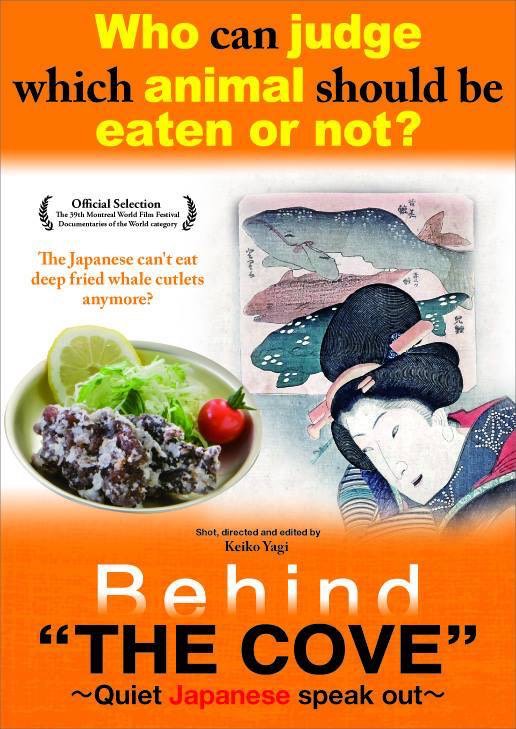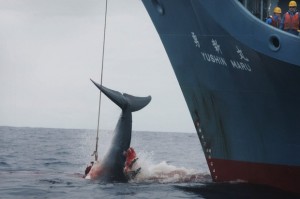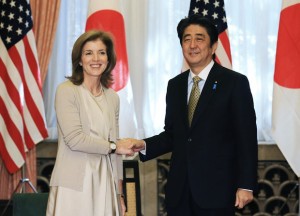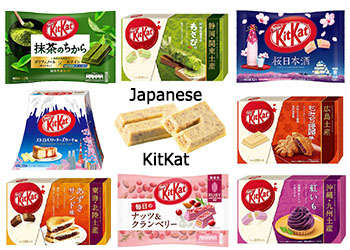A new film has been released in Japan challenging the anti-whaling and dolphin-hunting attitudes of foreign activists and filmmakers.
Directed by Keiko Yagi, Behind the Cove purports to show the truth that the Academy Award-winning 2009 documentary The Cove did not show.
That film, directed by Louis Psihoyos, was an unflinching look at dolphin-hunting in Japan, specifically around Taiji, Wakayama Prefecture, whose annual drive now regularly attracts foreign protesters, especially those associated with the quasi-militant environmentalist group Sea Shepherd.
Clearly low-budget and rather slapdash, the trailer for Behind the Cove seems to show the makers hounding foreign protesters in Taiji, and also interviewing some on Skype.
It is being positioned as a “refutation” of The Cove and promoted as a the “quiet Japanese speaking out”. Currently on release with English subtitles at a movie theater in Shinjuku, it remains to be seen if it reaches a wide audience. (It has also been invited to screen at Montreal World Film Festival.)
Ric O’Barry, one of the stars of The Cove, was recently detained at Narita Airport and stopped from entering Japan allegedly to participate in protests against the dolphin drive in Taiji. US Ambassador Caroline Kennedy is just one of the many prominent people who has voiced criticism of the Taiji hunt.

Opposition to anti-whaling and anti-dolphin hunt protesters is generally not taken up by casual advocates of whale or dolphin meat per se. The noisiest counter-protesters and those who seek to argue for Japan’s right to hunt whales and dolphins (as either coastal whaling, like in Taiji, or pelagic whaling in the deep seas, which is a very recent development in Japan) are often ultranationalist in tone, and whose online anger may actually do more damage than good to their cause.
Dolphin driving and other forms of small-type coasting whaling, such as hunting for Baird’s beaked whales, have a long history in Japan, though only in certain communities and areas. While these customs and traditions are coopted by nationalists as “Japanese” to form part of their agenda, the truth of the history is actually more ambiguous.
Whale meat is rarely eaten in Japan today and the catch from the government-funded, highly contested pelagic hunts often go unsold. However, for Baby Boomers whale meat has a nostalgic factor since it was a common dish served at schools in the postwar years when whale consumption peaked. It was only in these years that whale meat became a truly national phenomenon. But this rise in consumption was actually a matter of circumstances, caused by the scarcity of other meat immediately after 1945 and the occupation authorities’ decision to restart whaling to alleviate starving.
Understandably, many Japanese who would not regard themselves as advocates of whale or dolphin meat, nor as nationalists, feel affronted by the way foreign individuals and organizations attack fishermen, and how nations like Australia embark on legal actions against Japan to halt its hunting. In this sense, Behind the Cove taps into this feeling of indignity and wounded pride that is a natural response to the “anti-Japan” condemnation. The irony is that it is elements of the Japanese Fisheries Agency and Ministry of Foreign Affairs that have attempted to brand whaling as inherently “Japanese”, thus framing the attacks on a national level.
By coincidence, a documentary film made by a Japanese director (Megumi Sasaki) that attempts to look seriously and neutrally at the issue of whaling and whale meat in Japan is currently under development.
Revealingly, the Japanese marketing for the historical whaling film In the Heart of the Sea also took a radically different approach to the American campaign, renaming the film The Battle with the White Whale and placing the male “warriors” at the forefront of the publicity.
























